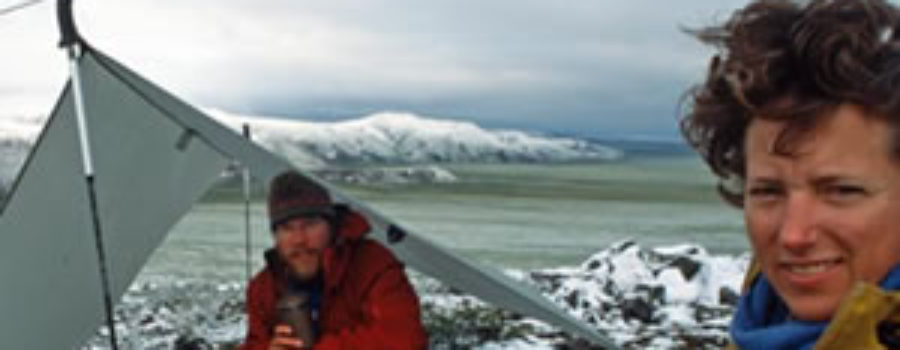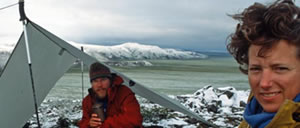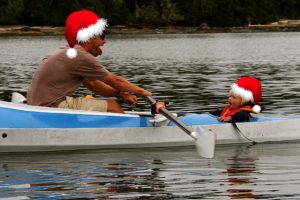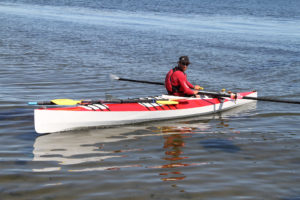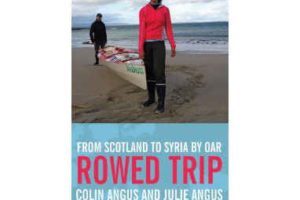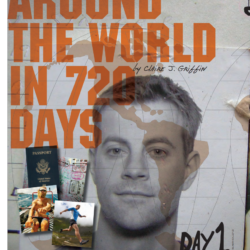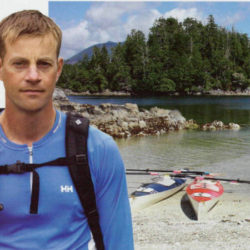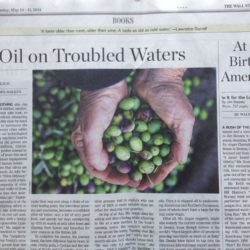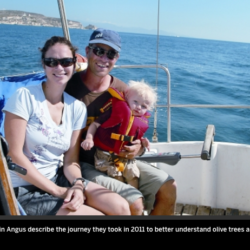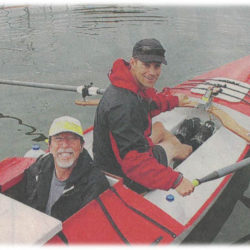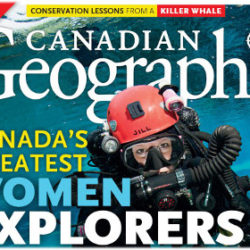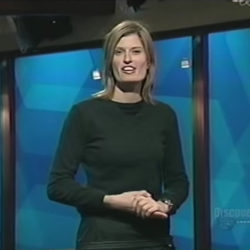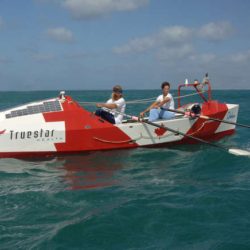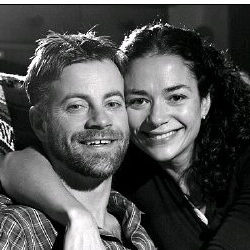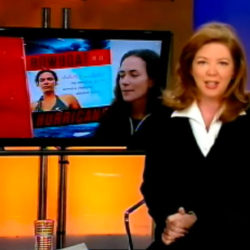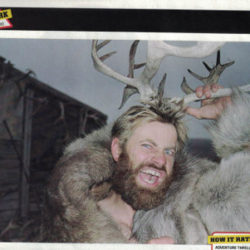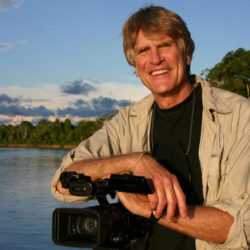How does a 6,000 km trek by foot, canoe, sailboat, and any other conceivable slow modes of transportation sound as a means of making your way to attend a dinner invitation? That’s exactly what Karsten Heuer and partner Leanne Allison are doing.
It all started in 2004 when Karsten Heuer was in the final stages of completing his book Being Caribou. On a whim he decided to send it through to one of his favourite authors – Farley Mowat. Mowat is a world-renowned scribe who has sold more than 14 million books internationally. His tales bring to life the people, landscapes and ecology of fascinating and remote parts of the planet. Heuer didn’t really expect to hear back from Mowat. A few weeks later a letter arrived from Newfoundland with a glowing review of Being Caribou. This was followed shortly after by a phone call from the Canadian icon inviting both Heuer and Allison to come out for a visit.
Farley Mowat lives 6000 km from Heuer and Allison in Cape Breton on the east coast of Canada. An invitation from their favourite author couldn’t be turned down, but the question was how to get there. Of course flying was the immediate answer, especially considering the couple also planned on bringing their two-and-a-half-year-old son and dog. They felt, however, that a visit to Farley Mowat should be tied to a more unique mode of travel, and they spent time pondering their options.
Their website www.necessaryjourneys.ca details how Heurer and Allison came up with their final decision:
No sooner had they hung up than the couple began discussing how to make the cross-Canada trip.
“Fly,” Leanne said.
“Borrow a friend’s van,” Karsten suggested (knowing their 20-year-old wreck wouldn’t make it).
But, once uttered, these ideas rang hollow. Arriving on a jet or rolling across the blacktop to meet Farley Mowat just didn’t seem right.
Later that night, after their toddler was asleep, Leanne and Karsten discussed the idea of a true pilgrimage. It would have to be a journey to complement the man at the end of that journey. With many of Farley Mowat’s characters and stories in mind, Leanne and Karsten pulled out a map of Canada and began to dream. Over the next hour, a compelling idea began to take form.
Why not take the true path to Farley Mowat – paddling, walking, and sailing a winding route through the settings of his books along the way!
The Canadian couple, along with their toddler, Zev, and border collie, Willow, have now spent five months paddling down Canadian rivers, trekking, hitching in supply ships and sailing towards Farley’s homeland. They have reached the town of Burgeo Newfoundland, their last stop before continuing on to visit Farley Mowat himself.
Their recent web update details the final stages of their six-month adventure:
Update 4 – September 17, 2007 – Burgeo, Newfoundland
When we sent our canoe gear home from Montreal two weeks ago we figured the adventurous portion of our journey was over. Behind us were the bugs, the remote rapids, the brutal portages, and the bear-strewn tundra; ahead lay a journey by sailboat past the quaint coastal settlements and snug harbours of the well-travelled St. Lawrence Gulf. But a less-than-straightforward passage to Newfoundland’s rocky SW coast has since set us straight: Bobbing like a cork in the hurricane-tossed Atlantic, we now know what it means to suffer gut-wrenching nausea in a 40-knot gale and 10-foot seas.
It was our first impression of our hired vessel, I think, along with the quiet confidence of her Nova Scotian builder and skipper, Mr. Tam Flemming, that drew us in. After three months of canoeing it all seemed so comfortable: Bobbing dockside in a Quebec harbour, the Elsie N gave an aura of solidity and comfort that only grew as we went aboard. Finished in teak, Douglas fir and ash, her well stocked galley and roomy cabin glowed a warm welcome, especially the duvet-covered bunks and tiny wood stove. After too many days stuck in the train’s baggage car, Willow wasted no time stretching out onto the feather bedspread. Zev busied himself exploring the many portholes and hatches. Leanne and I giggled at our good fortune as we chatted with Tammy: not only had this friend-of-a-friend sailed all night to come meet us, but he had carved out a month of his valuable time to assist in our quest to “find” Farley. It was too good to be true. But then came the sobering reality of heading onto the heaving sea. And for the next 3 days, heave we did!
The truth is that we didn’t know if we should be scared or not. Leanne’s and my previous sailing experience amounted to little more than hoisting a small triangular tarp between two upright canoe paddles. But the seriousness of our endeavour, especially the last 12 hours in stormy Cabot Strait, became apparent when the Elsie N came heeling into the harbour of Burgeo, Newfoundland and, legs swimming beneath me, I stumbled into a group of weatherbeaten fishermen on the wharf.
“Howzit out there, bye?” asked one of them as he stood in a dockside doorway, baiting hooks. Given the slime and blood on his overalls I assumed he too had been out checking his nets and trawl lines.
“I found it a little rough,” I admitted. “How about you?”
He threw me a bewildered look and gestured to the foaming mouth of the harbour.
“Fishing us? Today bye? No Sir! That sea ain’t fit for we.”
****
Burgeo, Newfoundland is the last of Farley’s settings we are visiting before finally meeting the author himself. It is here in this quaint community of colourful houses that Farley came to live with his new bride, Claire, for six years in the 1960’s. Even though much has changed since then (cod moratorium; road now links it to the rest of Newfoundland) I understand why he found this town of 2,000 people so attractive. The surrounding countryside – a mix of rugged granite coastline, heather-covered headlands, and white sand beaches – is stunning, and the people are overwhelmingly hospitable. We have a car and driver at our beckon, fresh cod for most dinners, and more offers than we can possibly accept from fishermen who, after working 12-hour days, want to show off their beloved fishing grounds and coast.
It was during one of these tours (with Zev driving the 40-horse motor) that we first visited Aldridges Pond, the swimming-pool-sized tidal pool where the 60-foot protagonist in Farley’s A Whale for the Killing became trapped. The story is deftly told by Farley, using one whale’s death to examine the slaughter of hundreds of thousands of others, pitting the efforts of some locals to save the whale against the bloodlust of others. Despite the 40 years that have transpired since the book was published, strong sentiments still linger here in Burgeo. Of the dozens of fishermen, boat captains, teachers, and others who come by to visit us, most utter an apology for what happened all those years ago.
But it’s the mystical side of this tragic story that resonates most with Leanne and I, and on a calm evening we row to the pond with the book and listen to the words echo off the granite cliffs. They remind us of our own experiences with the caribou, of times when the human/animal rift – the separation between civilized and wild – dissolved to open a gateway to a higher, more meaningful understanding of life and our place in it.
These are difficult concepts to put to paper, much less type on a borrowed laptop in someone else’s living room and post in cyberspace, but soon, very soon, we’ll be able to settle down and discuss them over a bottle of rum with Farley. After covering five or six thousand miles across Canada, we have only 300 more to get to his summer home on Cape Breton Island. But they could be a long 300 miles: most are in open ocean.
And so we sit at Burgeo’s fishing wharf sewing the last few rips in Elsie’s sails while we watch the weather and hope for the impossible: calm seas and strong winds!
Karsten, Leanne and Zev
Karsten Heuer & Leanne Allison will also be making a documentary and writing book detailing this journey. For more information please visit :

